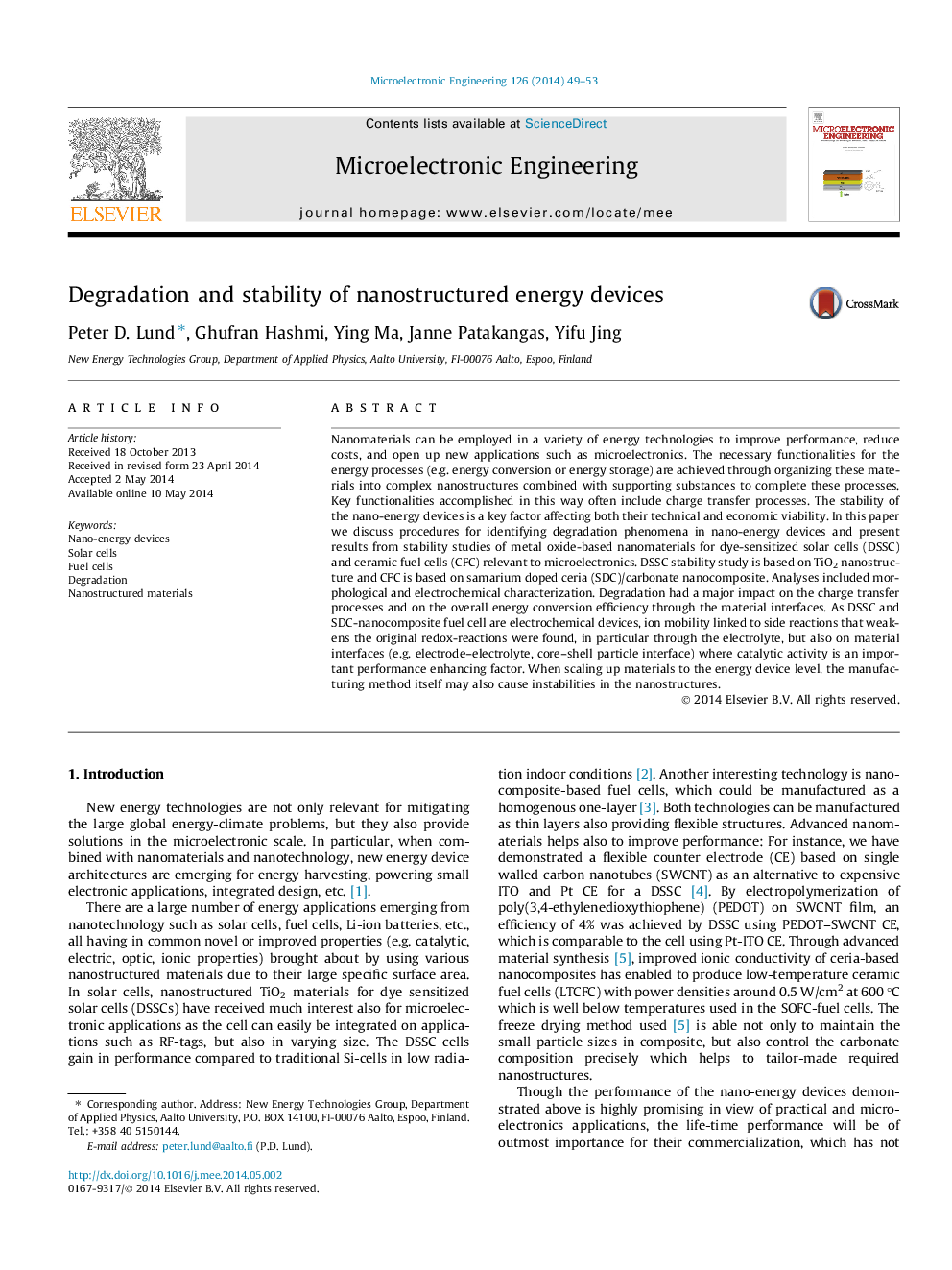| کد مقاله | کد نشریه | سال انتشار | مقاله انگلیسی | نسخه تمام متن |
|---|---|---|---|---|
| 539332 | 1450355 | 2014 | 5 صفحه PDF | دانلود رایگان |
• Degradation and stability issues in nano-energy devices were raised.
• Dye-sensitized solar cell and nanocomposite fuel cell were taken as examples.
• Some degradation factors of the two devices were discussed.
• A three-level analysis procedure was proposed to study the degradation.
• Some preliminary results of nano-device degradation are given.
Nanomaterials can be employed in a variety of energy technologies to improve performance, reduce costs, and open up new applications such as microelectronics. The necessary functionalities for the energy processes (e.g. energy conversion or energy storage) are achieved through organizing these materials into complex nanostructures combined with supporting substances to complete these processes. Key functionalities accomplished in this way often include charge transfer processes. The stability of the nano-energy devices is a key factor affecting both their technical and economic viability. In this paper we discuss procedures for identifying degradation phenomena in nano-energy devices and present results from stability studies of metal oxide-based nanomaterials for dye-sensitized solar cells (DSSC) and ceramic fuel cells (CFC) relevant to microelectronics. DSSC stability study is based on TiO2 nanostructure and CFC is based on samarium doped ceria (SDC)/carbonate nanocomposite. Analyses included morphological and electrochemical characterization. Degradation had a major impact on the charge transfer processes and on the overall energy conversion efficiency through the material interfaces. As DSSC and SDC-nanocomposite fuel cell are electrochemical devices, ion mobility linked to side reactions that weakens the original redox-reactions were found, in particular through the electrolyte, but also on material interfaces (e.g. electrode–electrolyte, core–shell particle interface) where catalytic activity is an important performance enhancing factor. When scaling up materials to the energy device level, the manufacturing method itself may also cause instabilities in the nanostructures.
Figure optionsDownload as PowerPoint slide
Journal: Microelectronic Engineering - Volume 126, 25 August 2014, Pages 49–53
